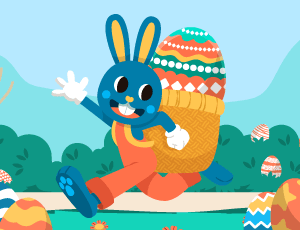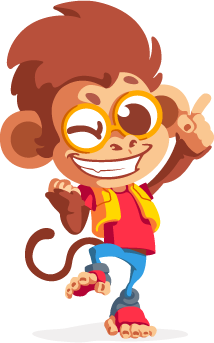Escola Games | Jogos Educativos
https://www.escolagames.com.br
Teacher's support sheet

Easter Puzzle
Get ready for an unforgettable Easter adventure with the game Easter Puzzle! In this fun and colorful challenge, children of all ages can put together pieces to create charming images of bunnies and their chocolate eggs. Each puzzle is a special work of art, designed to spread Easter joy around the world. Come celebrate and share magical moments with Easter Puzzle! 🐰🥚🎉

Teacher's tips
Level of education: Elementary School
Age: 05 to 08 years
The memory game is an excellent resource for developing logical thinking. The difficulty of trying to overcome the challenge constantly serves as a stimulus for the child, through the challenge he feels stimulated and thus expands his cognitive abilities. From the simplest to the most difficult, there are puzzles for all ages. From the age of three, children are already able to start assembling the easiest games. As the little ones develop, increase the number of pieces. [FIM-DICA]
Learner outcomes
Stimulate learning;
Develop attention and logical thinking;
Develop motor coordination;
Favor the development of memory performance;
Develop different thinking skills such as: observe, compare, analyze and synthesize;
Analyze figures and expand the notions of composition and decomposition from the fragmentation of an image;
Perceive the different positions of fragmented figures in an image;
Develop self-confidence in problem solving;
Analyze figures and expand the notions of composition and decomposition from the fragmentation of an image;
Perceive the different positions of fragmented figures in an image;
Stimulate cooperation among colleagues by promoting activities in pairs or groups;
Teachers' goals
Stimulate learning;
Develop attention and logical thinking;
Develop motor coordination;
Favor the development of memory performance;
Develop different thinking skills such as: observe, compare, analyze and synthesize;
Analyze figures and expand the notions of composition and decomposition from the fragmentation of an image;
Perceive the different positions of fragmented figures in an image;
Develop self-confidence in problem solving;
Analyze figures and expand the notions of composition and decomposition from the fragmentation of an image;
Perceive the different positions of fragmented figures in an image;
Stimulate cooperation among colleagues by promoting activities in pairs or groups;
Suggestions of approaches for the teacher
(Suggestion 1) Build assembly and assembly toys with reusable objects such as: shoe boxes, bottle caps, milk cartons, plastic cups, etc.
(Suggestion 2) Assemble logical sequences using shapes and colors.
(Suggestion 3) Print drawings and ask the students to paint with crayons, colored glue, colored pencils, then make cuts by fragmenting the drawing, shuffle it and ask the students to put it back together, simulating a jigsaw puzzle.
(Suggestion 4) For the initial grades (children's education) put together a puzzle with the student's name. The student's name can be written under the photo to make the activity even more enjoyable.
(Suggestion 5) Making a table made of TNT or other rubberized material. Make cutouts in TNT similar to the puzzle, then promote games with students on this mat.
(Suggestion 6) Number hunting: print a card with several numbers (plus or minus 5), these numbers will be the result of the mathematical operations that you will put on the board. The cards must be the same. Write the operations on the board and the students must quickly color the result. It is an activity similar to Bingo.
(Suggestion 7) Work with ride-on toys (LEGO style). Promote the construction of objects with these toys; houses, animals, cars, etc.
(Suggestion 8) Domino games. The traditional toy can be used or the dominoes can be replaced by other designs and shapes (triangle, circle, square).
(Suggestion 9) Use of Flash Cards relating to the contents being worked on in the classroom.
(Suggestion 10) Use the Checkers game.
(Suggestion 11) Working with Tic-Tac-Toe.
(Suggestion 12) Use the 7 mistakes game.
More about the content
Explore other activities that stimulate logic such as:
Music
Logical sequence games
Board game
Video game
Ride and ride toys
Mimicry
Learn a new language
Meet other games that work the same skills.
Puzzle
https://www.bestschoolgames.com/games/puzzle/
Monsters Puzzle
https://www.bestschoolgames.com/games/monstersPuzzle/
Animals Puzzle
https://www.bestschoolgames.com/games/animalsPuzzle/
Dog Puzzle
